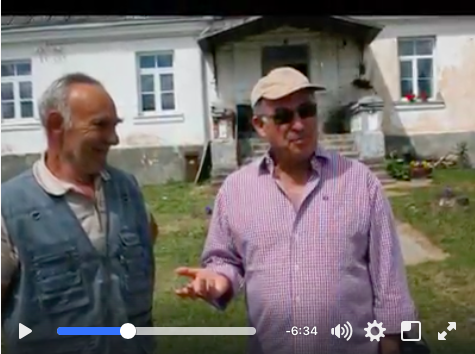Zog Nit Keynmol

New videos have arrived:
ORT Compilation
Mexico CIM ORT
King David High School Victory Park, Johannesburg
Press reports:
Australian Jewish News 27 April 2017

Lithuanian Jewish Community
From the SASIG Newsletter

SA-SIG – Southern Africa Jewish Genealogy: SA-SIG Newsletter
The SA-SIG Newsletter
Source: www.jewishgen.org/safrica/newsletter/index.htm
Including:
Update on Southern African KehilaLinks sites
A reminder that there are a number of South African KehilaLinks pages which can be found on the JewishGen’s KehilaLinks project web site. (The KehilaLinks project provides a set of web pages which commemorate the places throughout the world where Jews have lived.)
The full list of South African KehilaLinks pages can be found at:
http://kehilalinks.jewishgen.org/Asia.html
The list now includes the following towns: Benoni, Bloemfontein De Aar, Cape Town, Germiston, Graaff Reinet, Grahamstown, Kwekwe (Que Que) in Zimbabwe, Johannesburg, Kimberley, Muizenberg, Oudtshoorn Pietersburg, Port Elizabeth, Pretoria, Springs, Stellenbosch, Uniondale, Upington, and Witbank.
Eli Rabinowitz, who has created and maintains most of these KehilaLinks sites, is currently in the process of setting up the following new pages: Paarl, South Africa; Maputo, Mozambique; and Mauritius, Africa.
Eli invites you to send him your stories, memories, photos, family biographies, and articles on Jewish life in any of these places, or for any of the existing pages. As examples of the kind of material he is looking for, Eli suggests you refer to the following links:
http://kehilalinks.jewishgen.org/kimberley
http://kehilalinks.jewishgen.org/graaff_reinet/We rtheim.html
http://kehilalinks.jewishgen.org/nasielsk/Kurtz.ht ml
You can find more information on Eli’s complete set of KehilaLink pages at:
You can contact Eli at eli@elirab.com
For reference, the KehilaLinks project home page can be found at:
http://kehilalinks.jewishgen.org/
and
Lions Shul is a special place
The Lions shul is Johannesburg’s longest standing synagogue, still a vibrant, active, and dynamic congregation. The 108 year old synagogue is in pristine condition and the chavershaft (solidarity/equality) is warm and family-oriented. The services are inspirational and the ambiance magnificent.
A video about the synagogue can be found at:
A description of the synagogue on the Johannnesburg KehilaLinks page can be found at:
http://kehilalinks.jewishgen.org/johannesburg/Li ons_Shul.html
and
FIRST COUSINS REUNITED
The story of how Eli Rabinowitz finally found his first cousin, Zara Smushkovich, after being separated for over 35 years
We love hearing stories of families reunited through Geni. Recently, Eli Rabinowitz finally found his first cousin Zara Smushkovich after being separated for over 35 years! The discovery was made thanks to the help of a friendly person on Facebook who found the family tree on Geni.
Read the SA SIG newsletter link for more.



































































